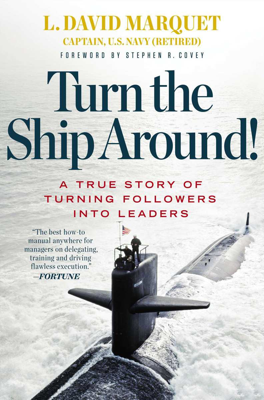Final Preparations
Embracing Initiative in Emergencies
The chapter begins with David Marquet addressing a common belief that initiative from the bottom isn't suitable in crisis situations. Contrarily, he argues that releasing control during emergencies yields better results, sharing an incident from May 1999 while the USS Santa Fe was en route from Pearl Harbor to San Diego.
Operational Readiness and Crew Improvement
As the USS Santa Fe heads to San Diego, the crew's morale is high, with rising reenlistment requests and improved maintenance performance. Departments begin collaborating more efficiently, and deliberate actions reduce errors. The leadership of chiefs has expanded, leading to better-managed schedules and shortened times for submarine qualifications.
Despite the improvements, Marquet expresses concerns about their readiness for deployment, marked by a frenetic pace of activity with extensive equipment maintenance required.
Critical Incident: Fire Drill Aboard the Submarine
A fire drill reveals flaws in the current fire response system where crew members, caught up in following standard procedures, fail to extinguish a fire quickly using nearby resources. This incident highlights an issue with existing procedures becoming the main focus over practical problem-solving, where the process becomes prioritized over the goal (extinguishing the fire).
Mechanism Implementation: Specify Goals, Not Methods
Marquet introduces modifications to the drill protocols: 1. Immediate Adaptation: Drill monitors can adapt the drill based on the crew's response; if the fire is extinguished swiftly, the drill concludes. 2. Practical Application: Crew members nearby are encouraged to respond immediately without waiting for specific personnel designated previously, thus focusing on practical outcomes.
These changes aim to motivate the crew to act efficiently and employ common sense over strict adherence to procedures during emergencies.
Changing Communication Practices During Emergencies
Further reforms include more descriptive communication during fires. The practice of simply stating "fire" is expanded to provide context like "open flames" to paint a more accurate picture for decision-makers. This is part of broader efforts to ensure that casualty responses are efficient and informative.
Improving Stealth on the Submarine
Addressing internal noise management, Marquet transitions from a top-down approach to a self-reporting system for noise violations ("transients"). This change leads to more honest reporting and a quieter, more stealth-efficient submarine.
Successful Adaptation and Crew Certification
The modifications and leadership style have a positive impact, culminating in successful pre-deployment inspections and high crew performance. The crew's proactive engagement, marked by the use of the "three-name rule," helps build a strong reputation and readiness for deployment.
Leadership Lessons: Specifying Goals, Not Methods
The chapter concludes with a reflection on the importance of setting clear goals without dictating the methods for achieving them. This approach empowers the crew to be innovative and responsive, significant for both competence and clarity in operations. This concept also aims to prevent compliance with procedures from overshadowing the ultimate objective: effective operational performance.
Questions to Consider
- How can you ensure that processes serve as tools rather than becoming the overriding focus?
- Does your organization emphasize procedure adherence at the expense of accomplishing core objectives?
- Can your operational manuals benefit from clearer, more specific directions to better guide staff actions?
